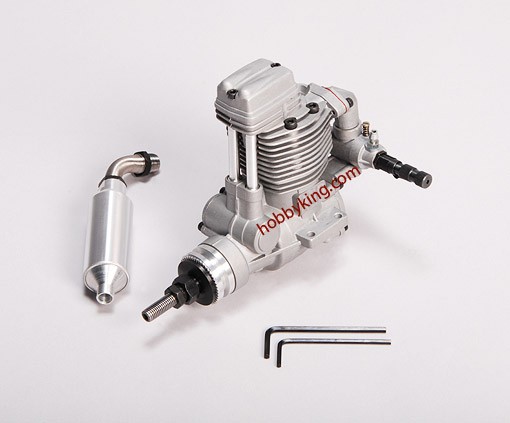
Find great deals on eBay for 2 stroke glow engine. Shop with confidence. Skip to main content. New Listing vintage MDS.40 2-Stroke Glow/Nitro RC Model Airplane Engine 6.5cc r/c. 5.0 out of 5 stars. 1 product rating - vintage MDS.40 2-Stroke Glow/Nitro RC Model Airplane Engine 6.5cc r/c. 2-Stroke Glow Engines for R/C Aircraft [C. David Gierke] on Amazon.com. *FREE* shipping on. Gas Turbine Engines for Model Aircraft Kurt Schreckling.
The name gas, however, is misleading because it is sometimes used generically to describe all types of IC (internal combustion) engine, whereas many people - especially in North America - know gas just to mean gasoline, or petrol. Nitro is really a name that's been adopted from the rc car world, but is commonly used to describe glow plug powered planes too.
The word nitro comes from nitromethane, an ingredient of glow fuel. It is fair to say that although glow plug engines are the most common type found in rc airplanes, true 'gas' engines ( i.e. Petrol powered) have become much more popular in recent years and their availability has increased lots.

In fact, most of the top model airplane engine manufacturers have turned their attention to bringing out new petrol engines to meet the growing demand for them. There's more on rc plane petrol engines further down the page. Two stroke vs. Four stroke Just like full size IC engines there are 2-stroke and 4-stroke model airplane engines, also sometimes referred to as 2-cycle and 4-cycle. The primary difference between the types is that a 2-stroke engine fires per single complete revolution of the crankshaft whereas a 4-stroke engine fires once per two revolutions. There is also a distinct difference in physical appearance, as you can see from the picture below (these are glow plug engines - 2-stroke on the left, 4-stroke on the right). This visual difference is the presence of two external pushrods on the 4-stroke engine; internally a 4-stroke engine has valves which need to be opened and closed by the pushrods.
A 2-stroke engine does not. Above: 2-stroke & 4-stroke model airplane engines. 2-stroke model airplane engines have long been the more common of the two types.
They produce more power for their size and are much more 'user-friendly' i.e. Easier to maintain. They are also cheaper to buy because manufacturing costs are so much lower due to their relative simplicity.
The majority of will be designed around using a 2-stroke engine rather than a four. But with that in mind, it's perfectly okay to put a 4-stroke engine in any suitably sized IC plane. Indeed, rc plane manufacturers usually specify two different engine sizes for their planes - one for each engine type. It's worth noting that, because 2-strokes produce more power for their size than 4-strokes, a 4-stroke engine size recommendation will always be bigger.
:format(jpeg):mode_rgb():quality(40)/discogs-images/A-254549-1474559811-8885.png.jpg) For example, a '46' size 2-stroke could be replaced with a '61' size 4-stroke. More on engine sizes further down the page. A 4-stroke engine produces more torque at lower revs and also produces less noise, and the noise it does produce is at a lower frequency. Because of this more realistic sound, it is quite normal for 4-stroke engines to be used in scale rc airplanes i.e.
For example, a '46' size 2-stroke could be replaced with a '61' size 4-stroke. More on engine sizes further down the page. A 4-stroke engine produces more torque at lower revs and also produces less noise, and the noise it does produce is at a lower frequency. Because of this more realistic sound, it is quite normal for 4-stroke engines to be used in scale rc airplanes i.e.
Planes that have been modelled from a real airplane type. While talking about scale planes, don't think that a single cylinder engine is your only choice. Multi-cylinder engines are widely available these days, up to huge radials like this from Evolution, shown left. Now that's a model airplane engine!! Here it is in action. Model airplane engine sizes All glow plug rc model aero engines, whether 2-stroke or 4-stroke, are expressed as a certain size. This size refers to the engine's capacity in terms of 1/100th of a cubic inch but is usually expressed as just the number eg a.40cu.in.
Engine would be referred to as a 40 and a.61cu.in. Engine would be called a 61. It's also worth noting that the airplane itself will likely be referred to with the same number i.e. A '40 size plane' would be a plane that has been designed to take a 40 - 46 engine. The size of the engine is usually stamped on the side of the engine casing, making size-identification very easy.